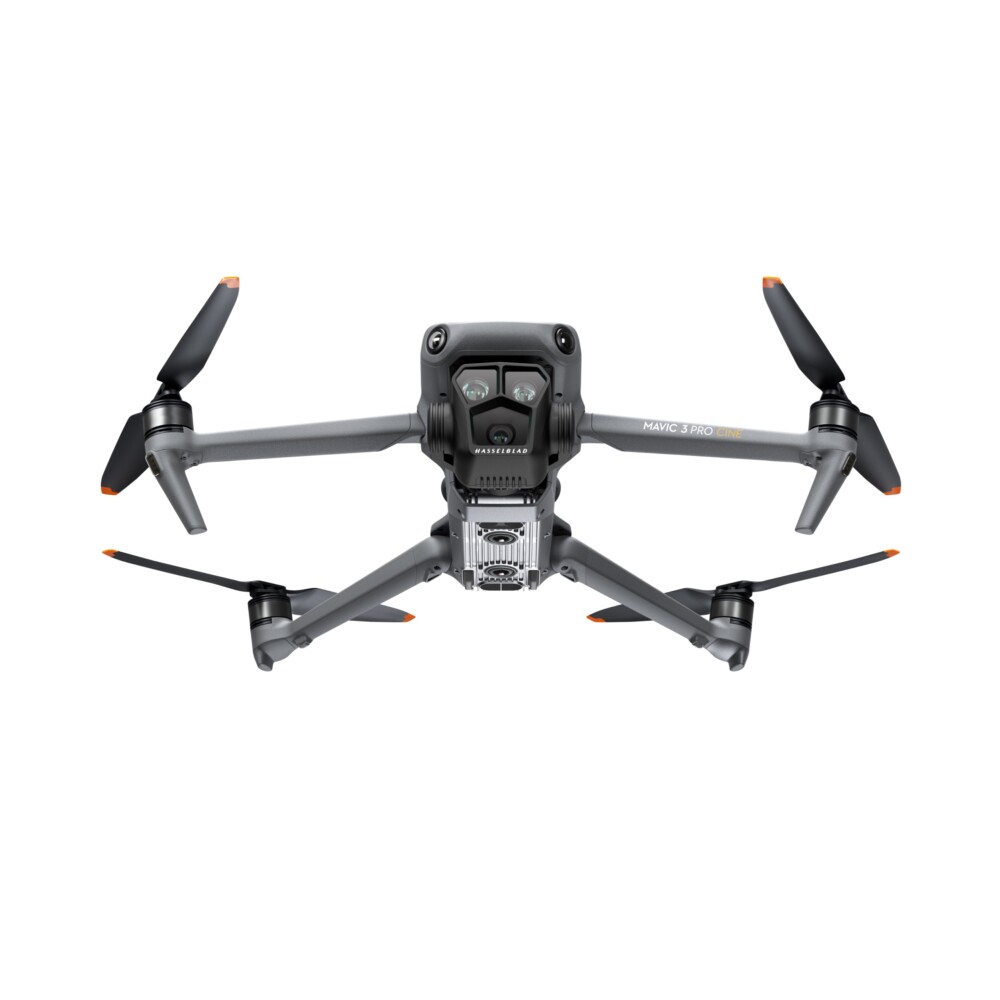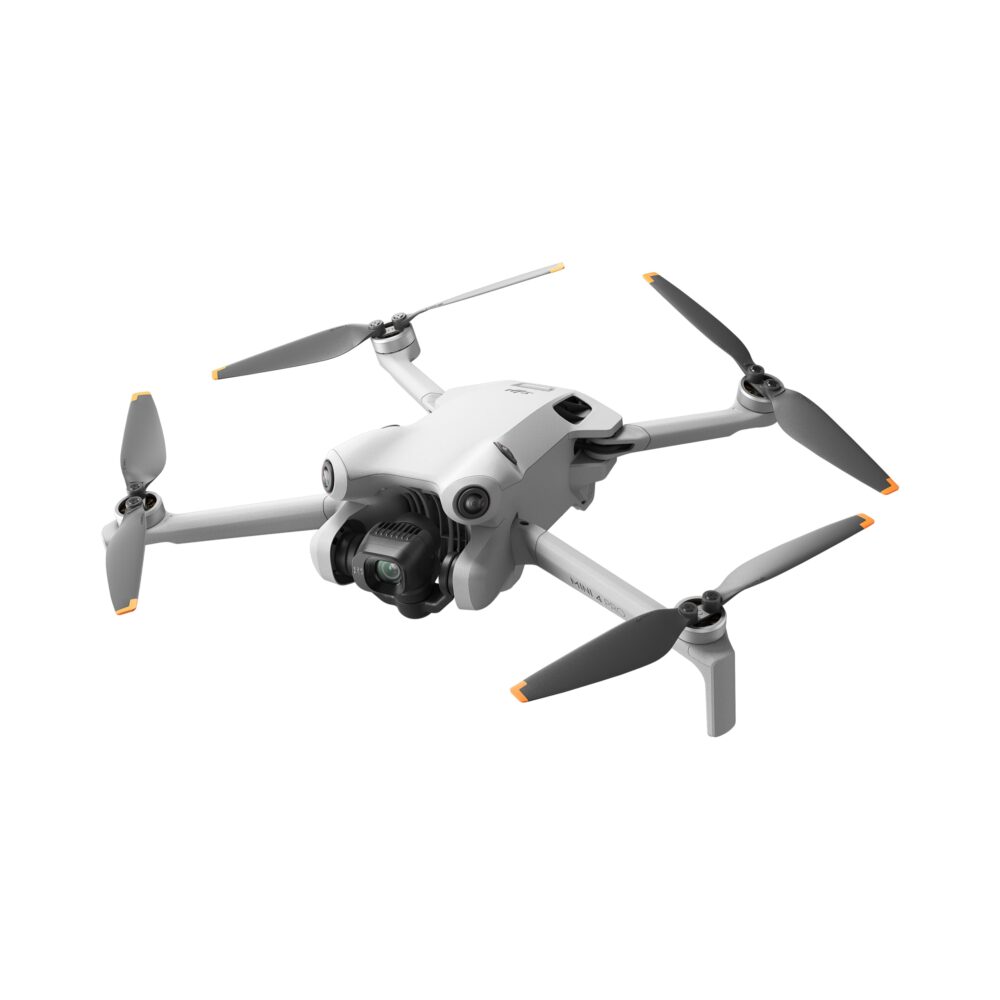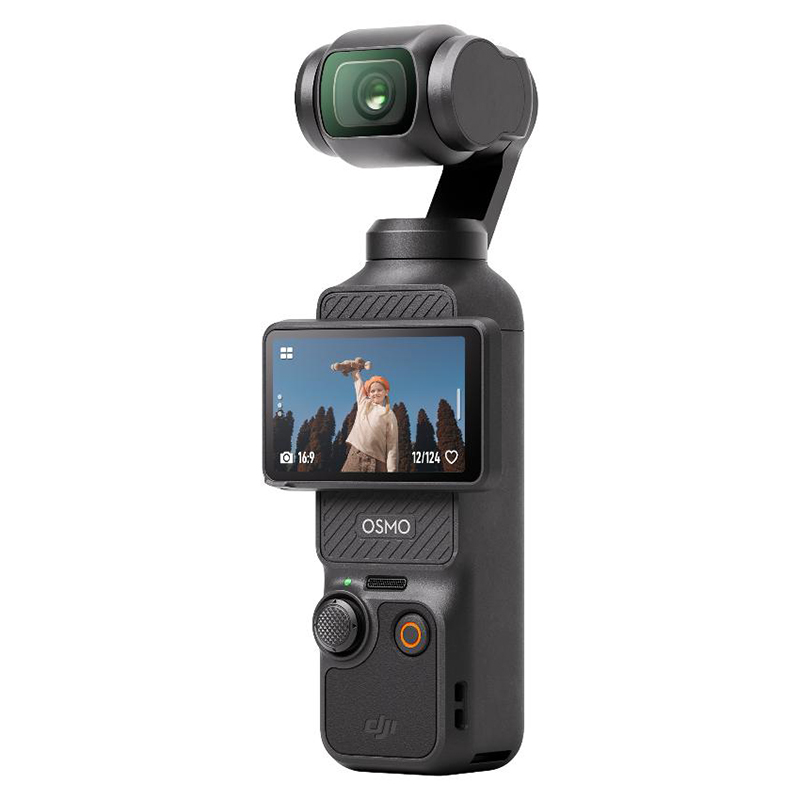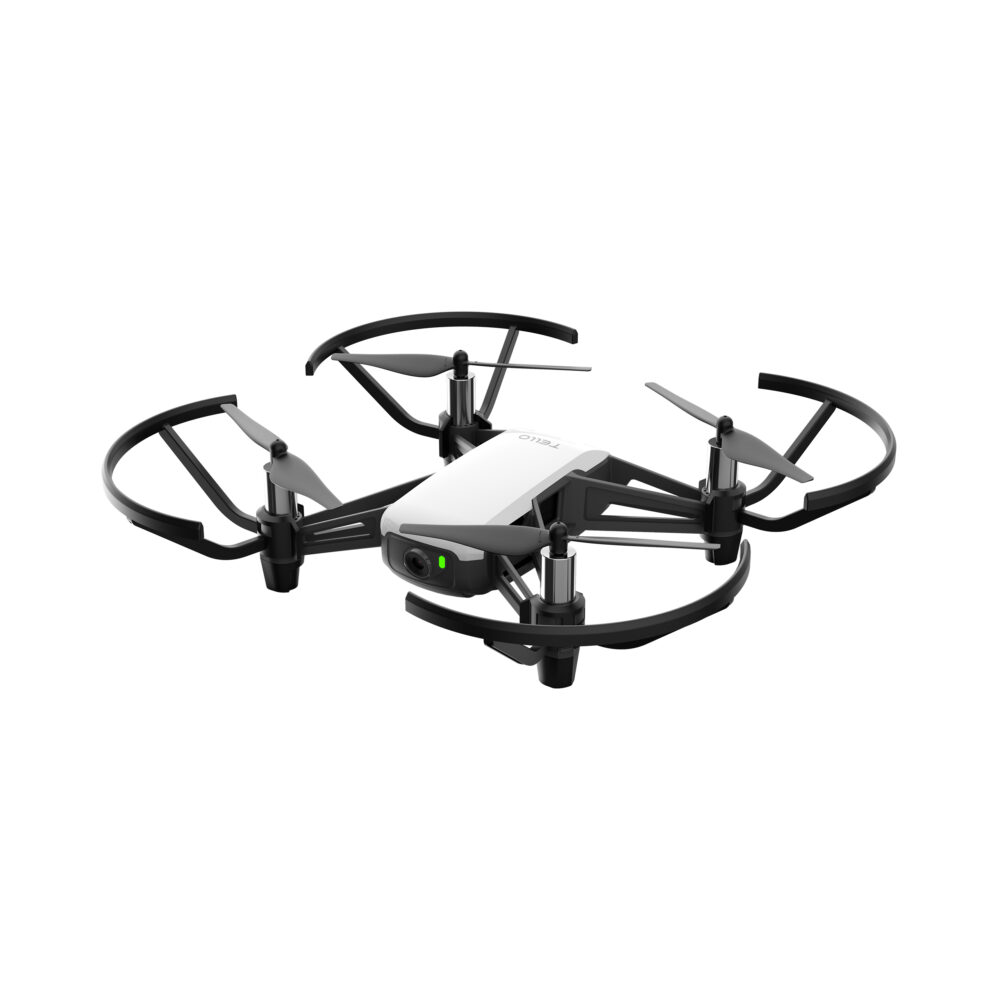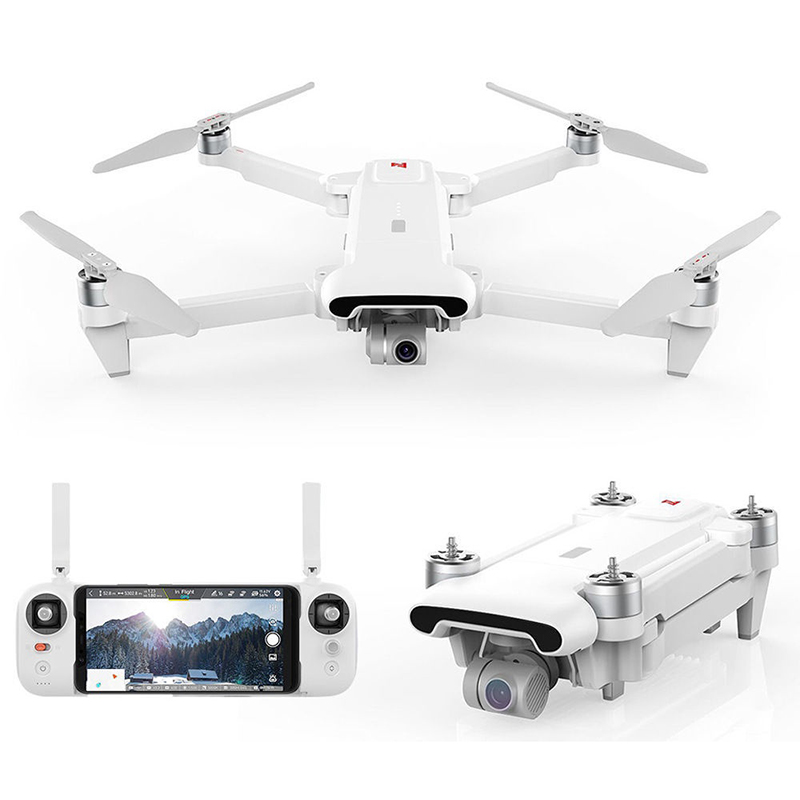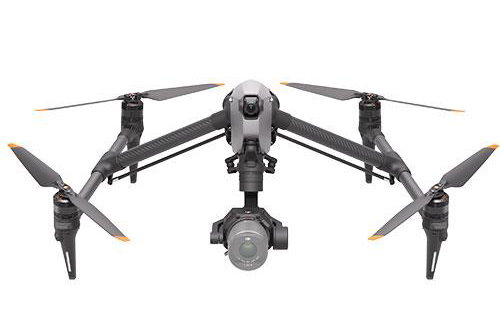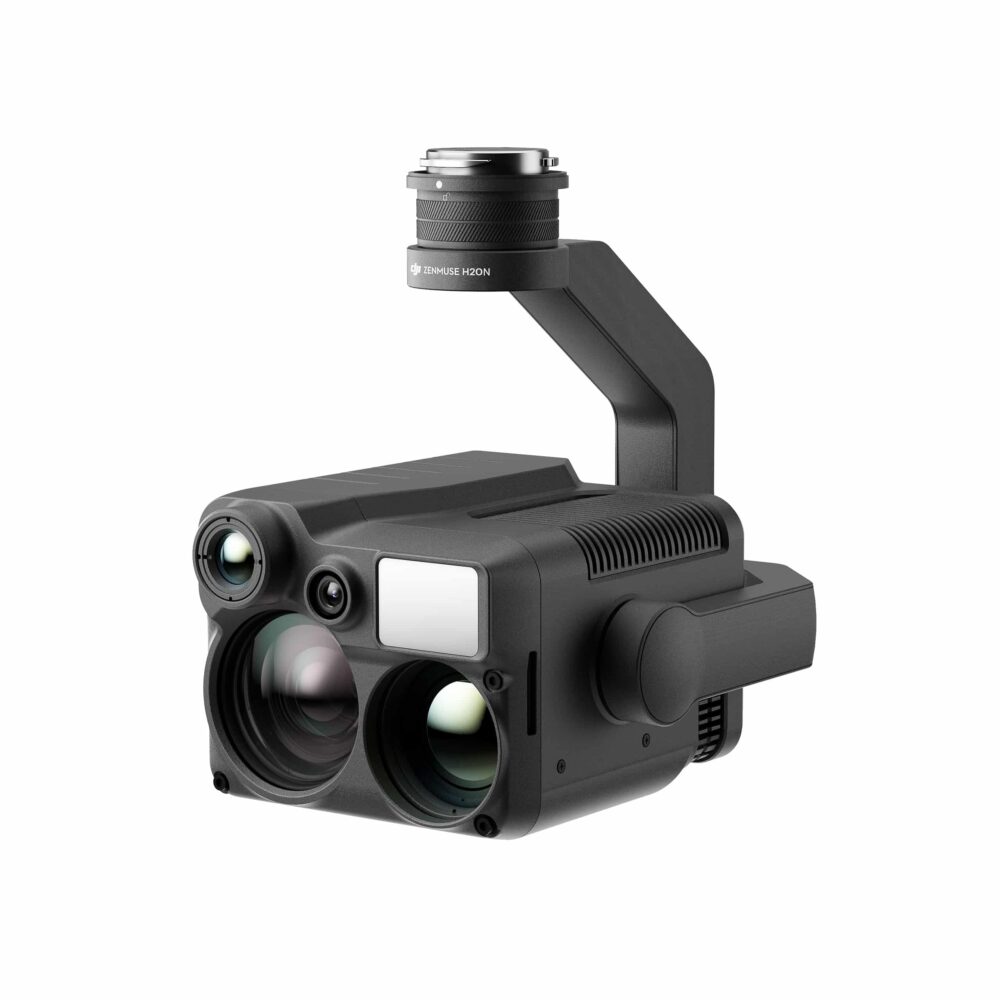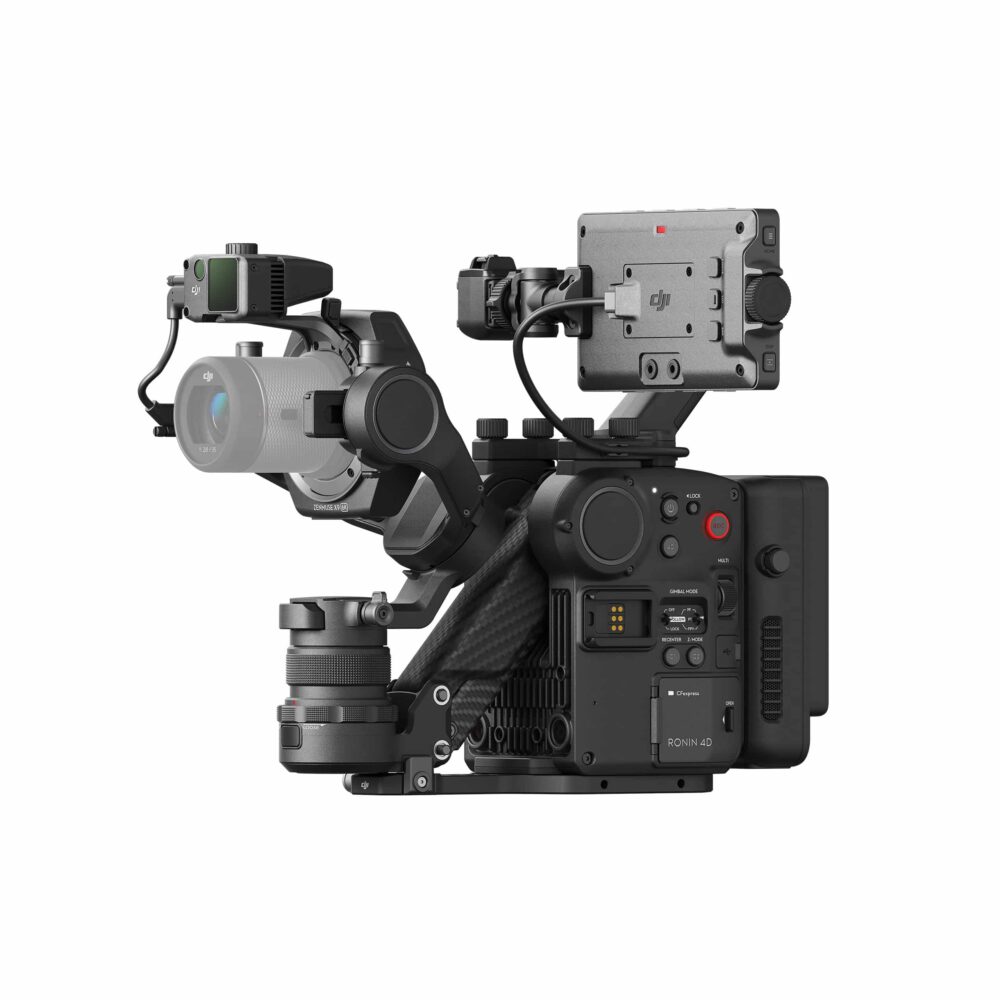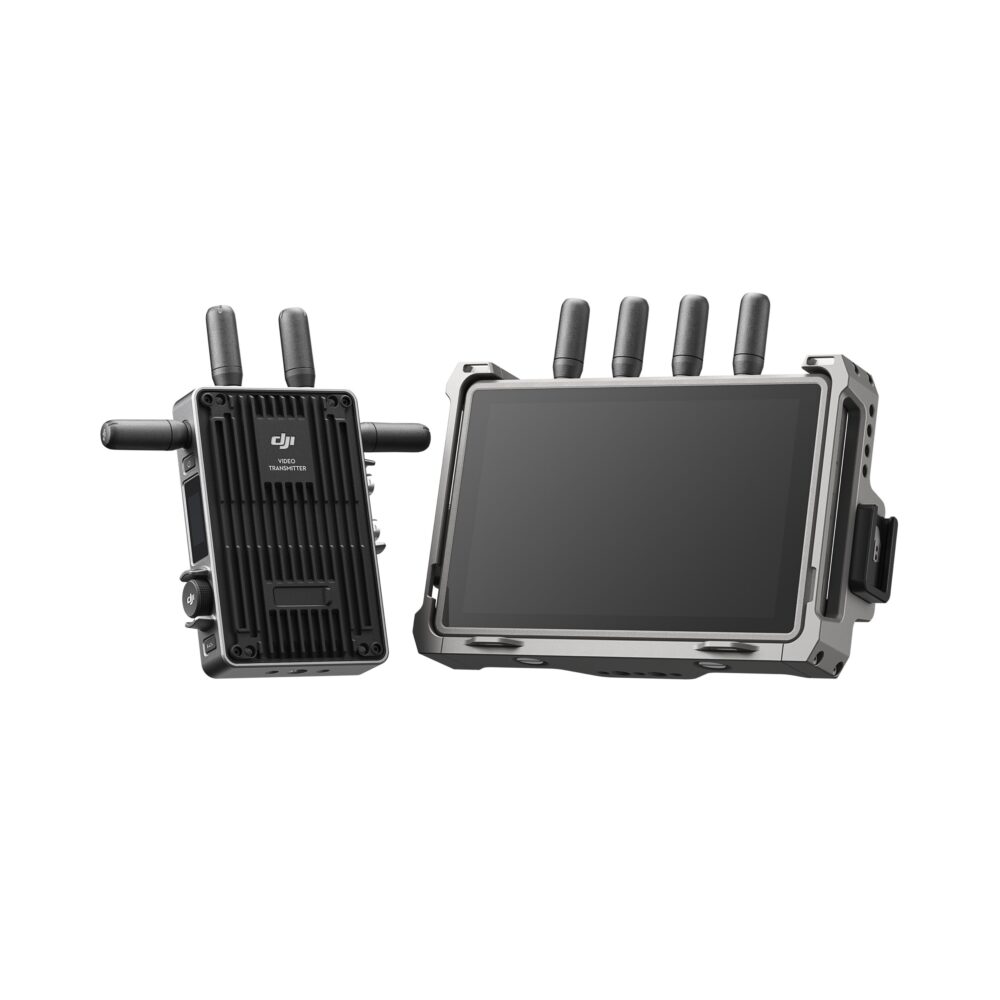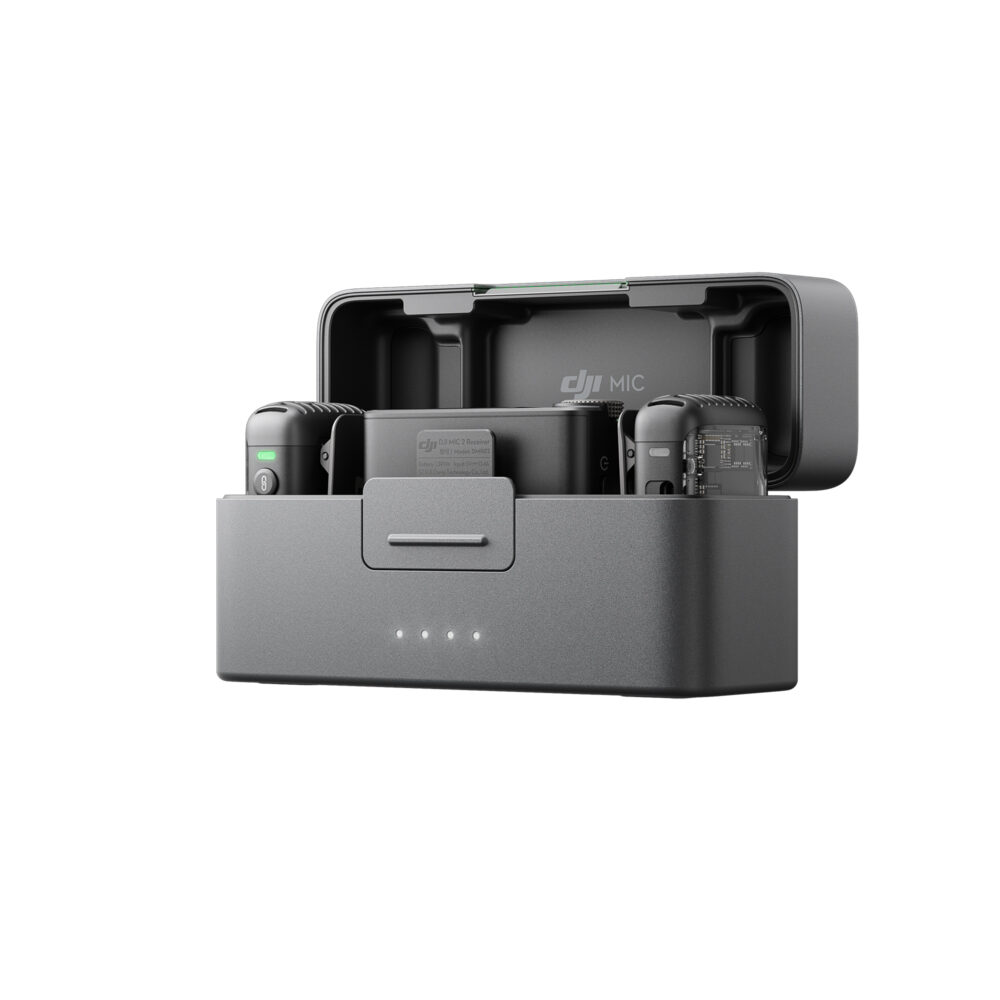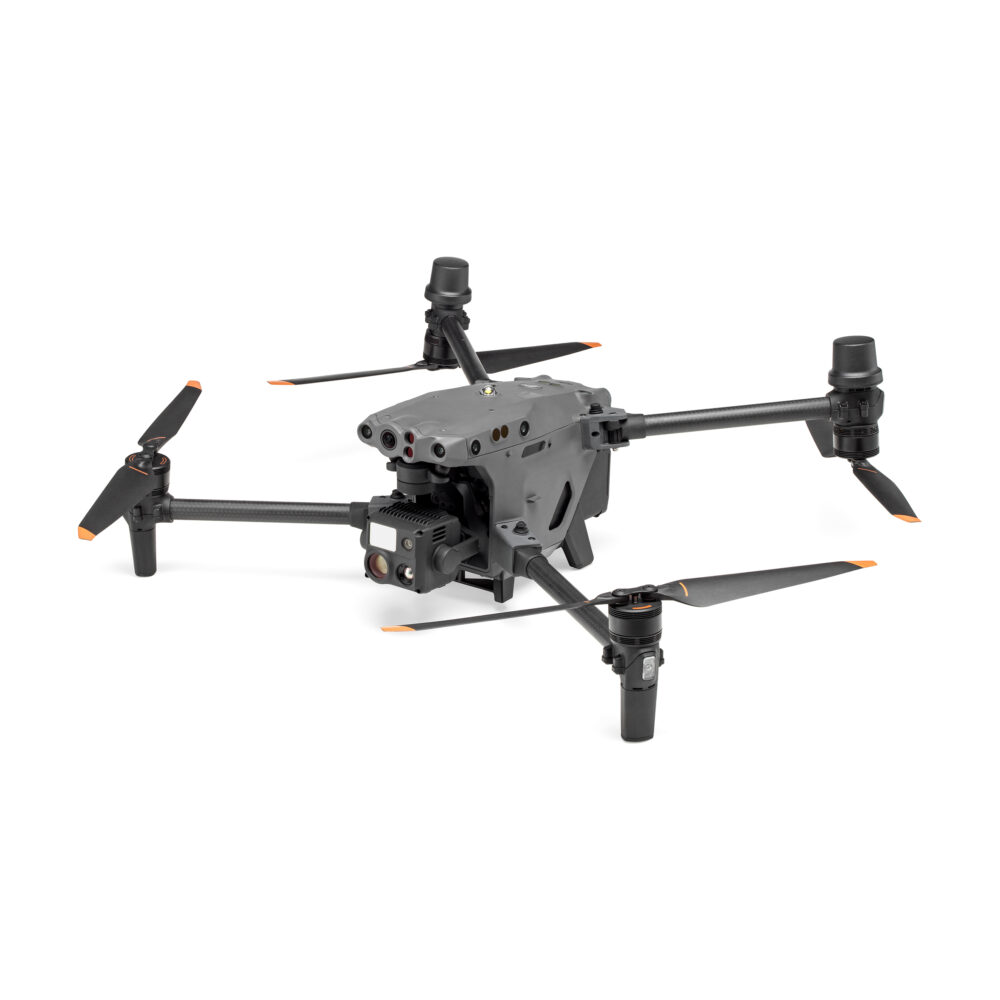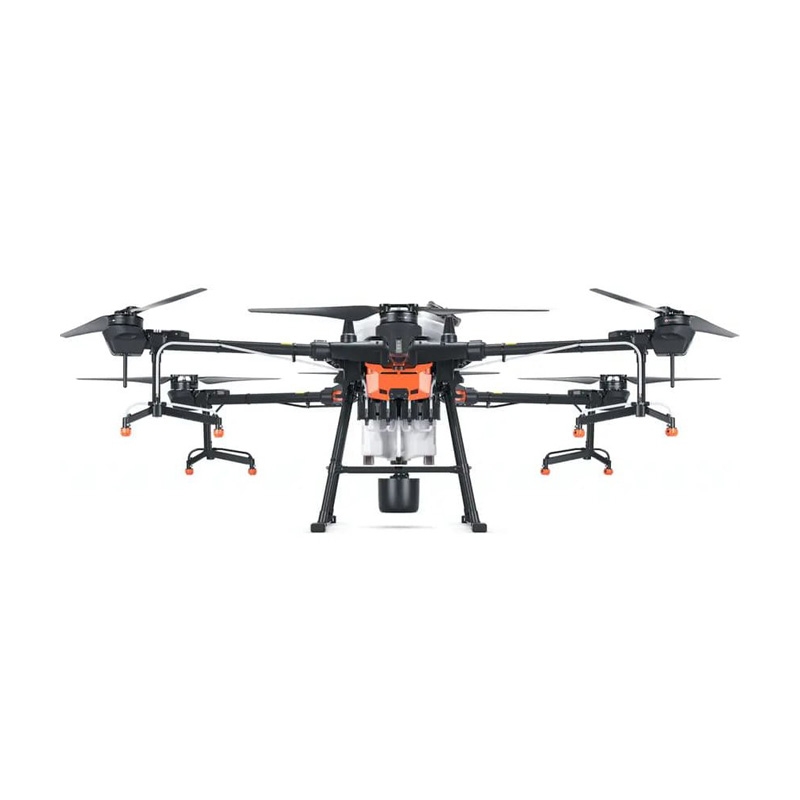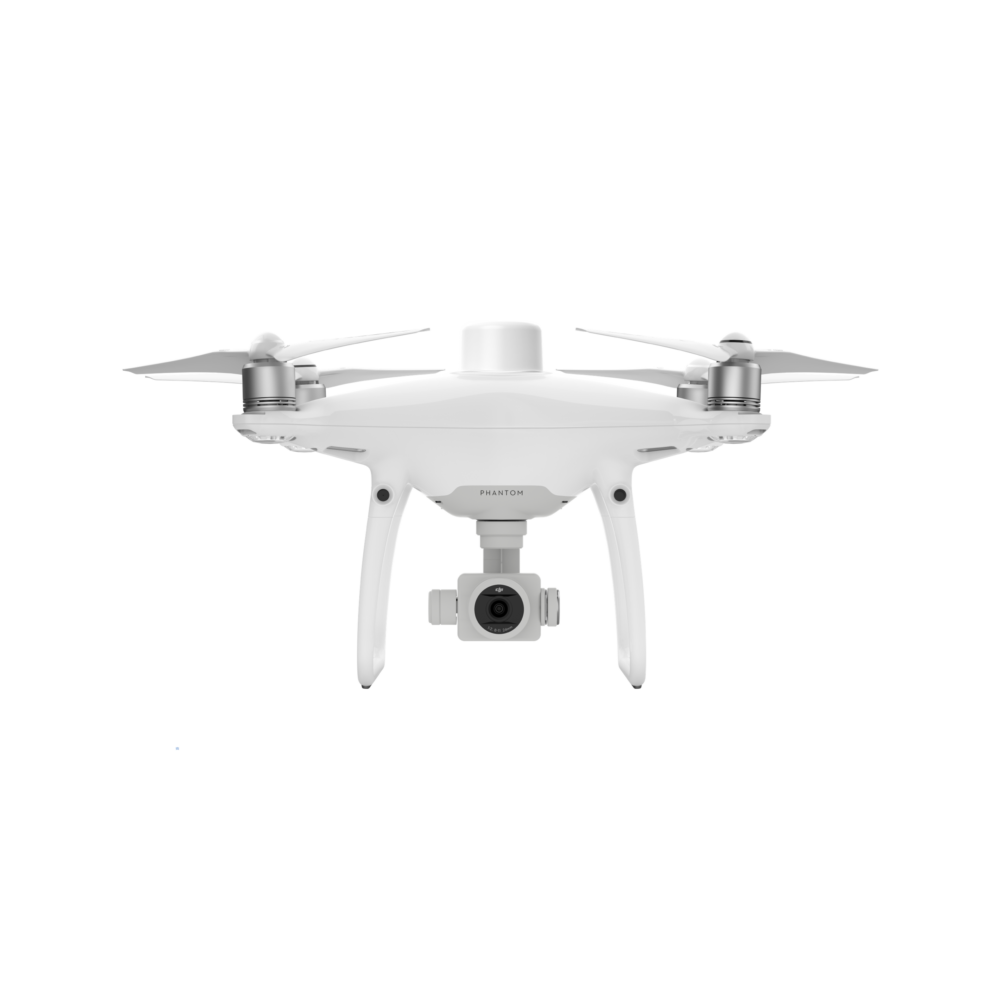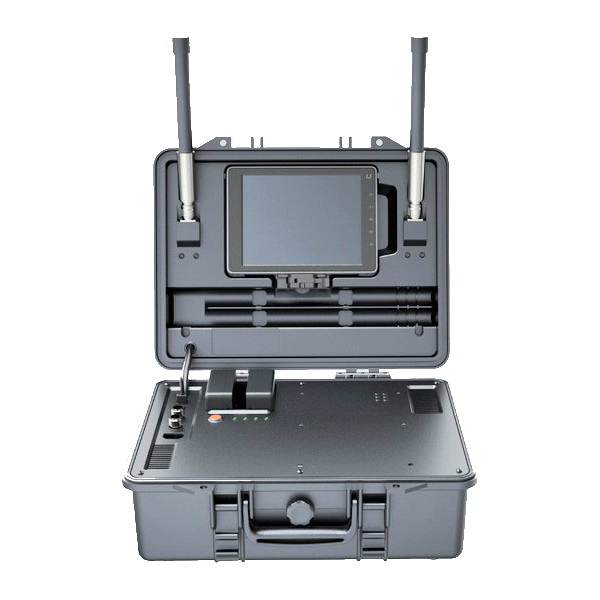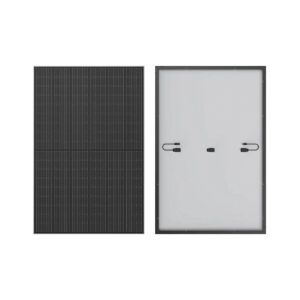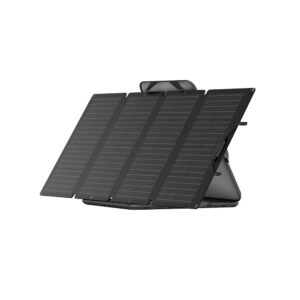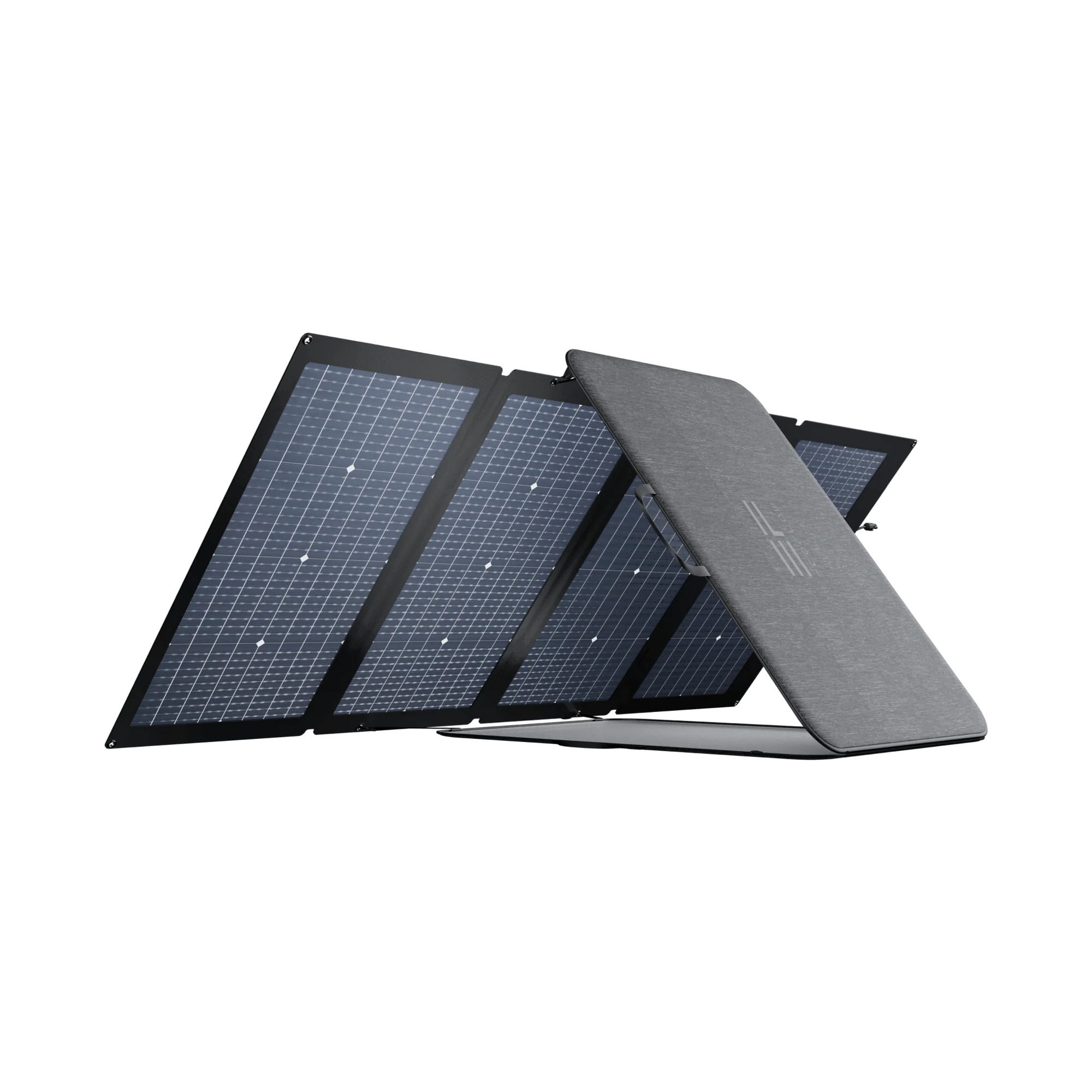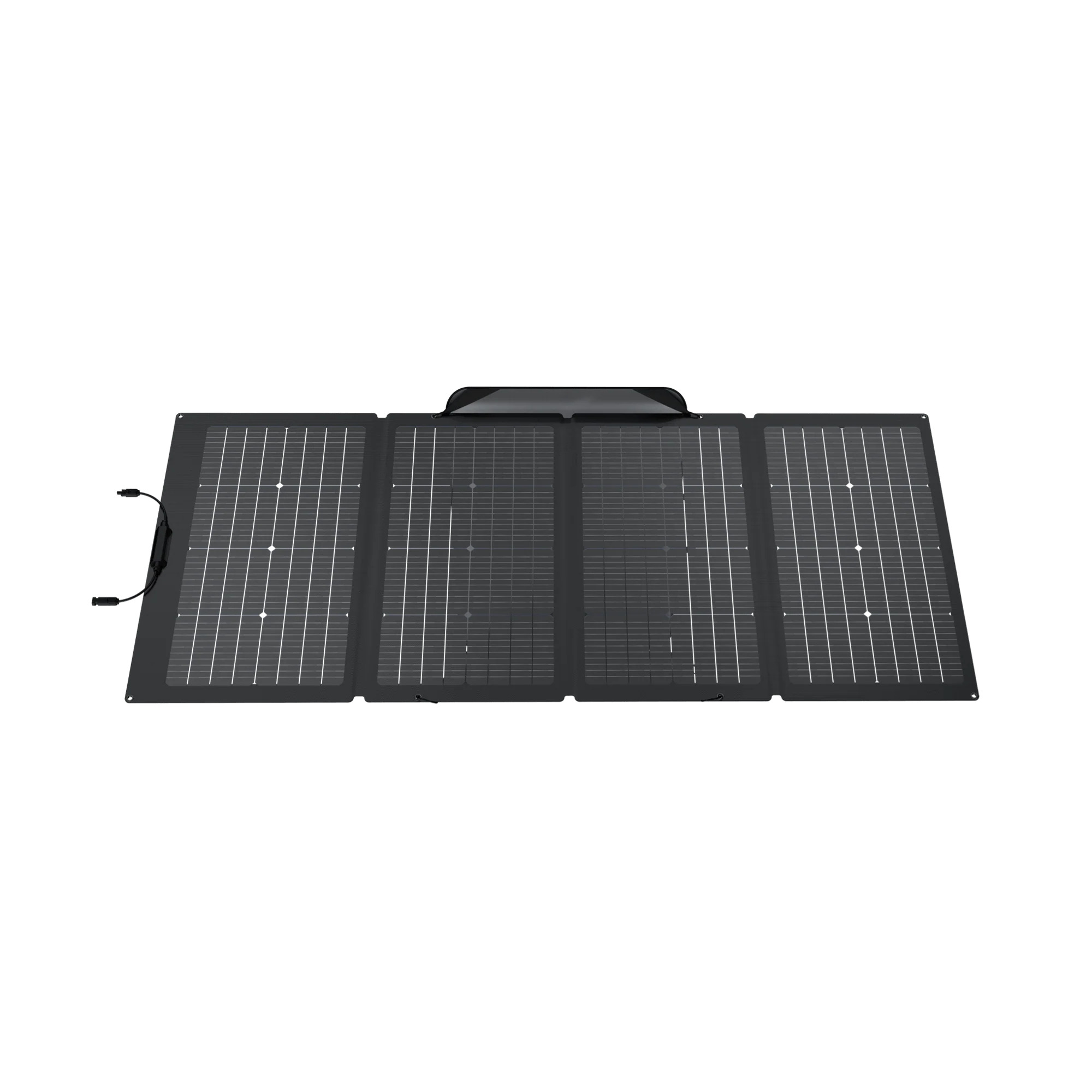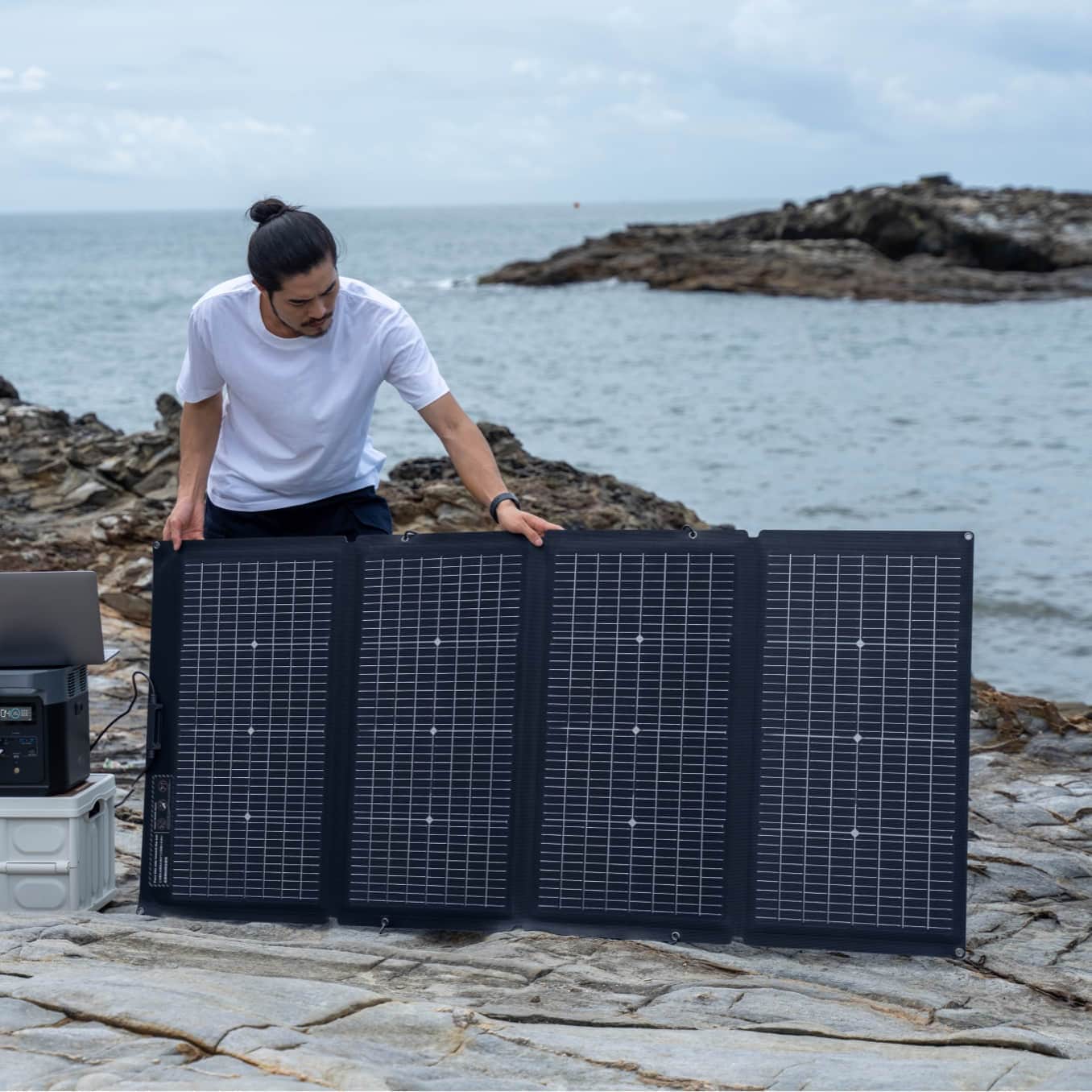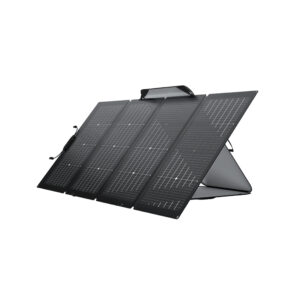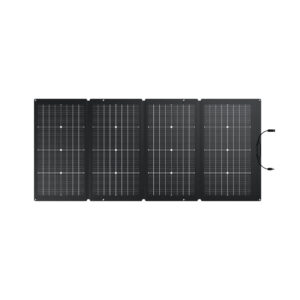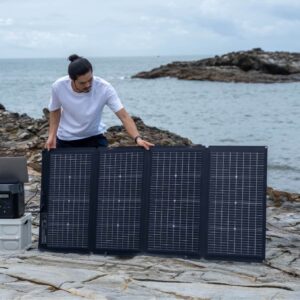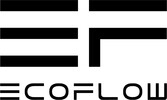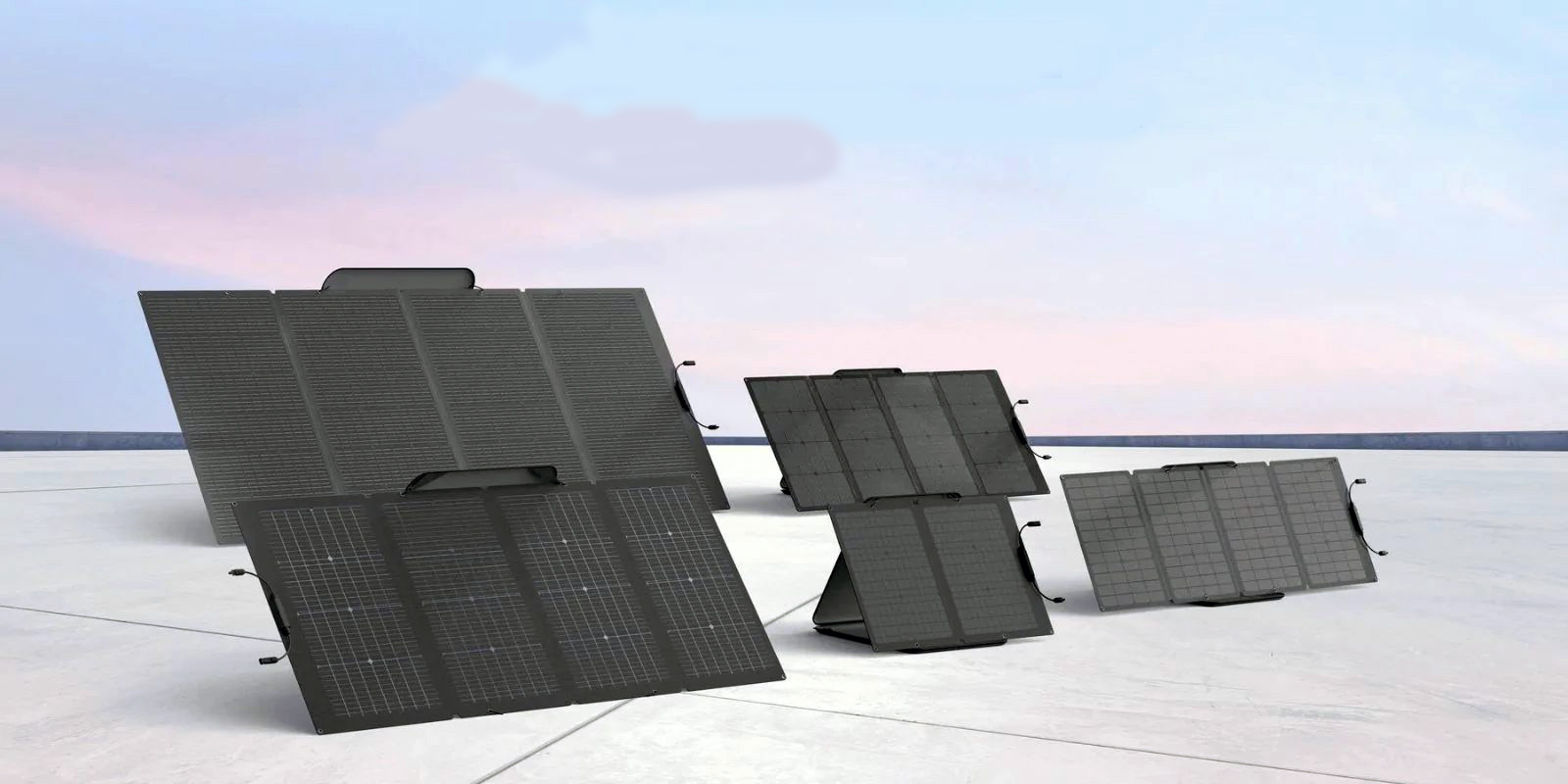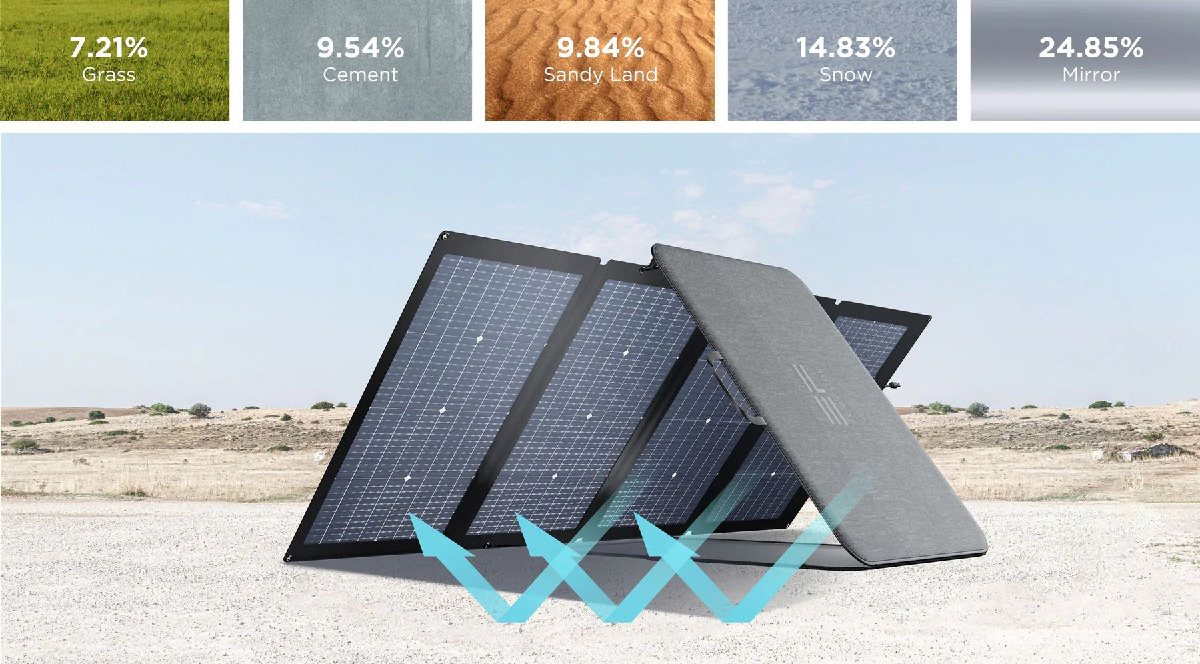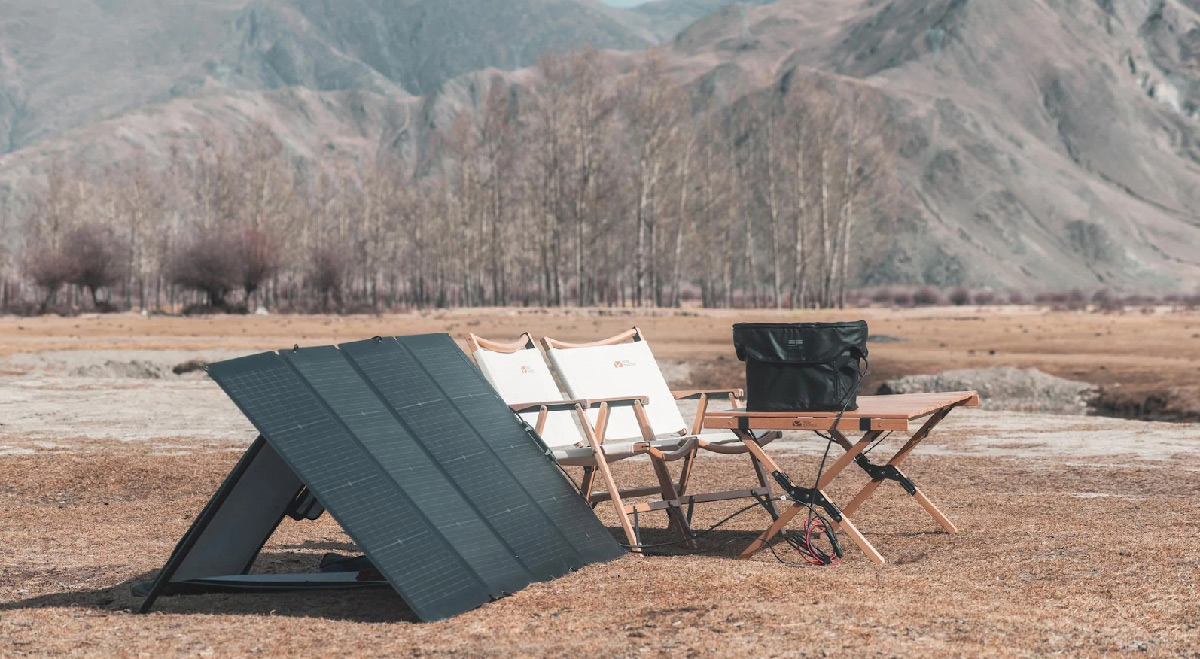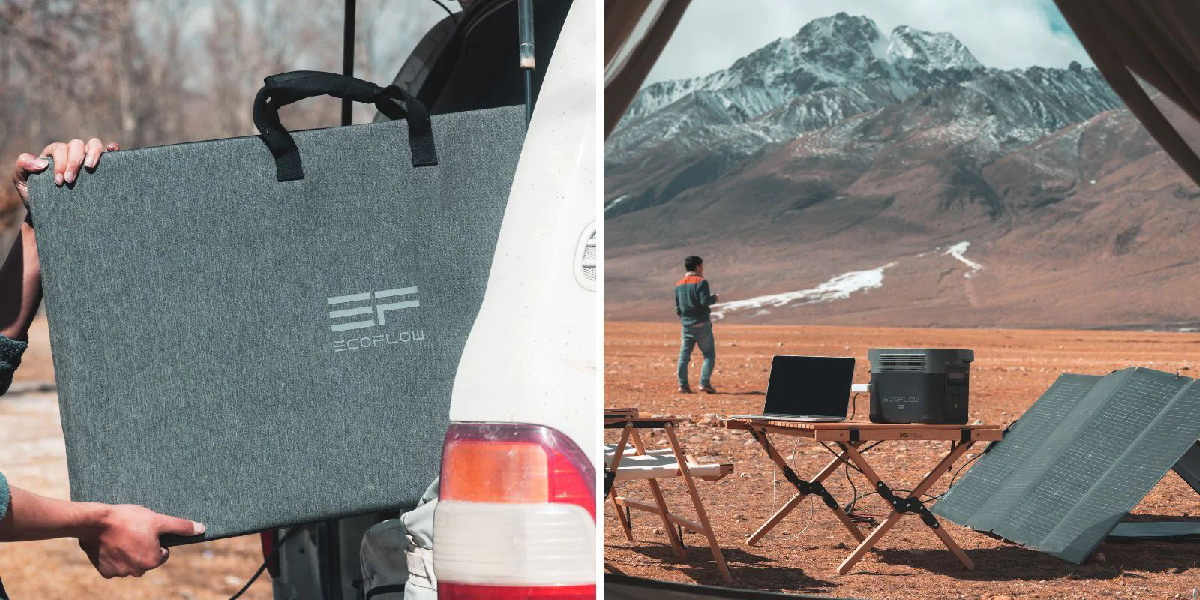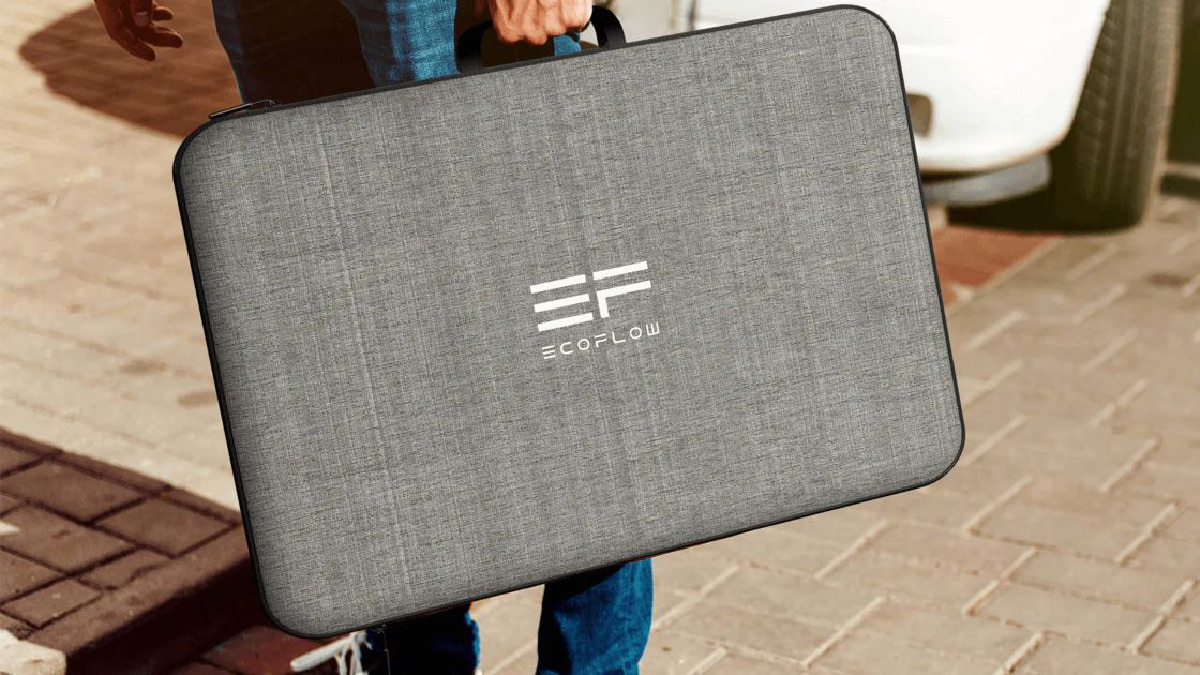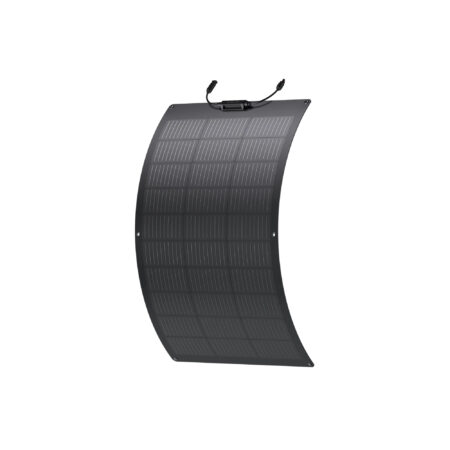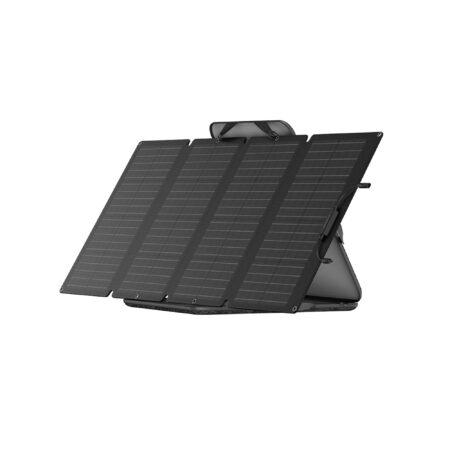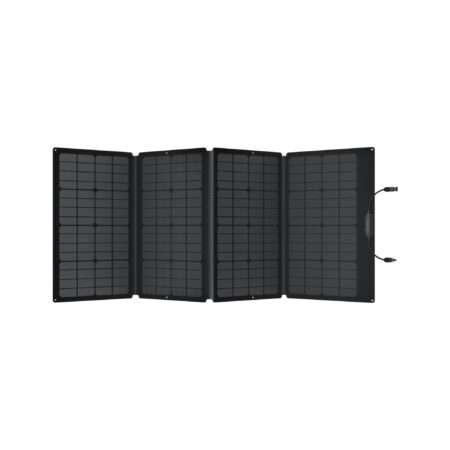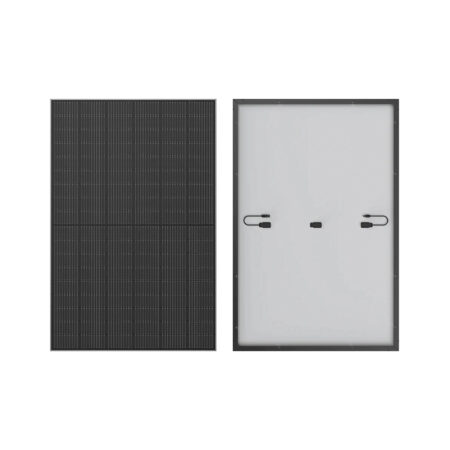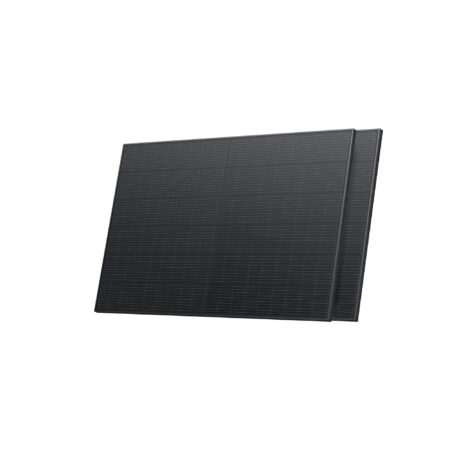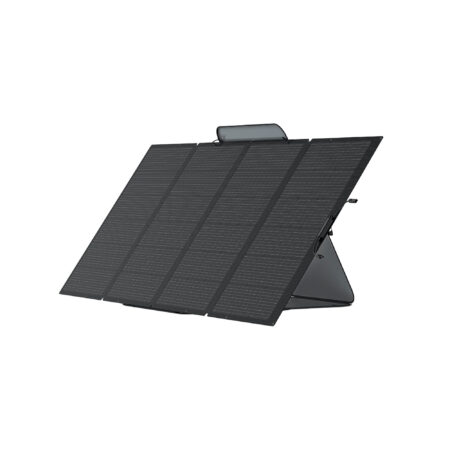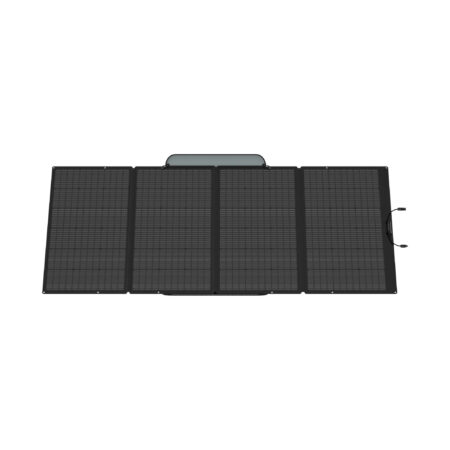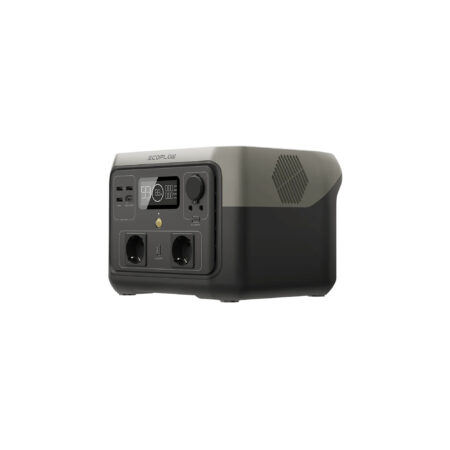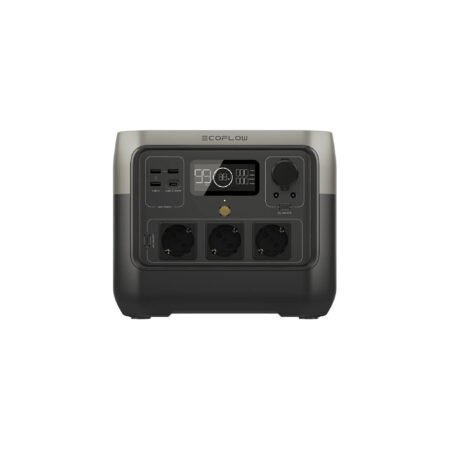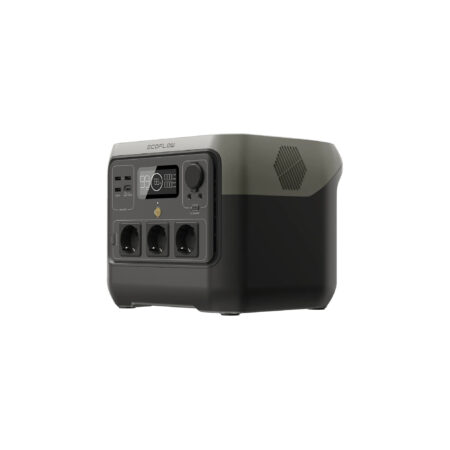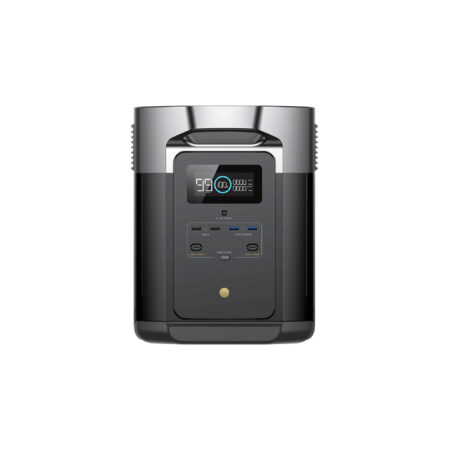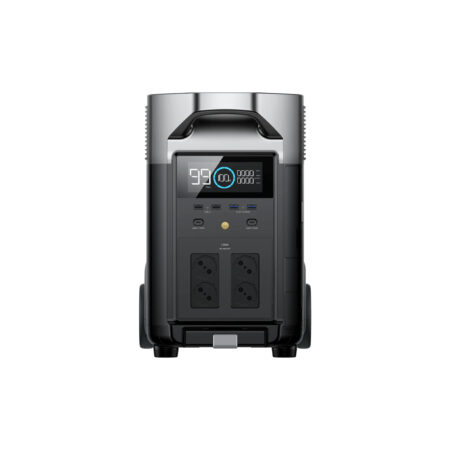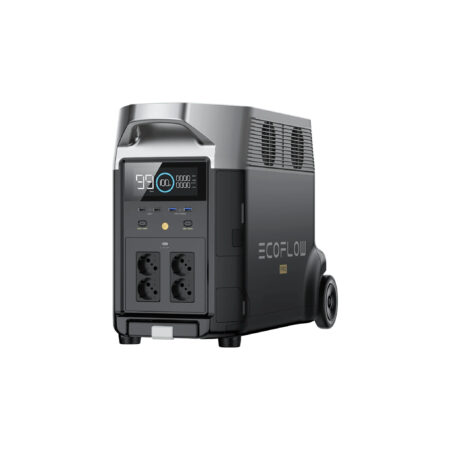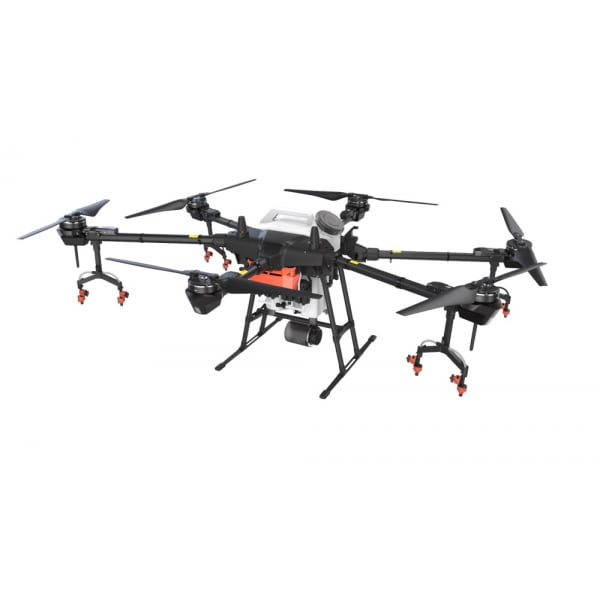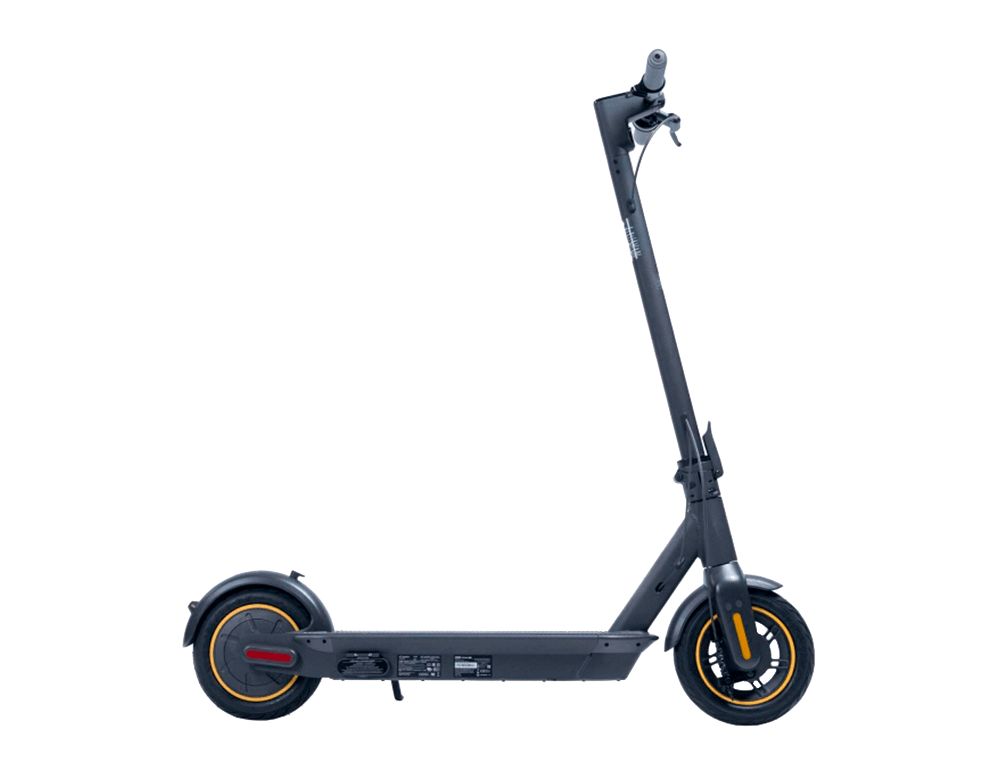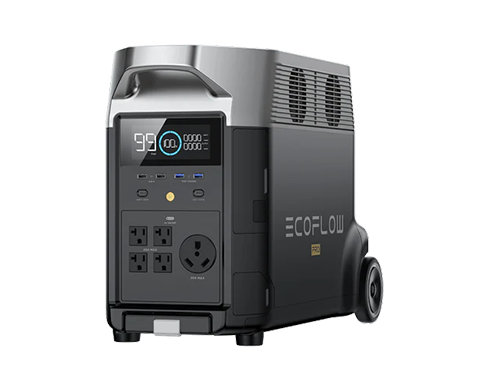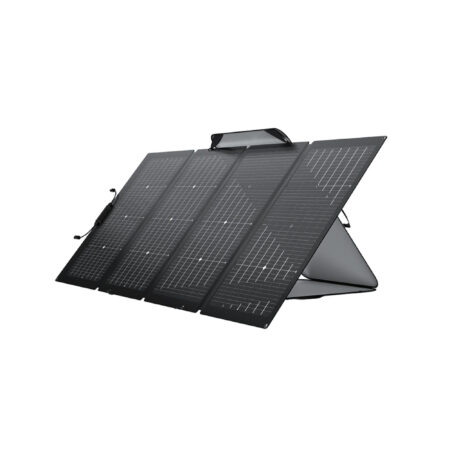- Main
- Shop
- Beginners
DJI Mavic
Your personal drone, always with you
DJI Mavic Mini
Ultralight and compact drone
DJI FPV
Everything for impressions at speed
DJI Osmo
Precious memories in smooth videos
For kids, education and fun
Everything for creativity, education and entertainment
FIMI
If you don't know where to start
- FIMI X8 SE 2022 V2
- FIMI X8 Mini
- Accessories for X8 SE
- Accessories for X8 Mini
- Professional
DJI Inspire
Professional drones
Professional cameras
Professional shooting and stabilization systems
DJI Ronin
Handheld gimbal for professional cameras
DJI Transmission
Professional shooting and stabilization systems
- Industrial
DJI Matrice
Industrial Platforms
DJI Mavic Enterprise
For inspections, rescue operations, firefighting
- VTOL
- Service
- B2B
- Contacts
EcoFlow 220W Bifacial Portable Solar Panel
599,00 €
The EcoFlow 220W Bilateral Portable Solar Panel is a two-in-one device. With a 220W primary side, and a 155W side on the back for ambient light, you can capture up to 25% more solar energy and charge your portable power station even faster.
Advantages of EcoFlow 220W double-sided solar panel:
- The 220W EcoFlow double-sided solar panel is made from thin, one-piece tempered glass, making it 5 times stronger than panels in the same class.
- The maximum capacity of 220W EcoFlow double-sided panels allows them to collect 25% more solar energy than traditional solar panels.
- If you correctly place the solar panel on snow, near a water or glass surface that reflects the sun’s rays, then you can collect solar energy by two working surfaces of the solar panel at the same time.
GENERAL SPECIFICATIONS
| Weight | Approx 9.5 kg |
|---|---|
| Dimensions | 82*183*2,5 cm |
| Rated Power | 220W (±5W)* Front Side, 155W (±5W)* Rear Side |
| Cell Type | Monocrystalline |
| Efficiency | 22-23% |
| Connector Type | Solar |
| Open Circuit Voltage | 21.8V (Vmp 18.4V) |
| Short Circuit Current | 13A (lmp 12.0A) Front Side, 8.8A (lmp 8.4A) Rear Side |
Does the 220W Bifacial Solar Panel generate a full 220W of power?
In most cases, it is normal for a solar panel not to deliver its full nominal power. Some of the reasons why this happens. As well as some suggestions for getting closer to the nominal power figure, are given below.
1. Light Intensity. The amount of light shining on the panel will result in fluctuations to the power output. You are more likely to achieve nominal power output figures closer to those obtained under test conditions when using the product on a clear day during the midday sun, than when using the product in the morning or later in the afternoon. Weather conditions will also affect the amount of sunlight that shines on the panel. For example, you are much less likely to achieve the figures for nominal power in hazy, cloudy or rainy conditions.
2. Surface Temperature. The temperature of the solar panel surface will also affect the amount of power generated. The lower the surface temperature of the panel, the more power will be produced. For example, solar panels generate more power when used during the winter than during the summer. This is completely normal. Solar panels generally reach temperatures close to 60°C (140°F) during summer. This reduces nominal power by 13%, despite the higher levels of light shining on the panel.
3. Sunlight Angle. In optimal light conditions, the sun’s rays should remain perpendicular to the surface of the panel for best performance. Power output is only marginally impacted by sunlight hitting the panel within 10° either side this 90° angle.
4. Panel Shading. The surface of the solar panel should not be shaded during use. Shading caused by shadows, foreign objects and glass can all greatly reduce power output.
5. Performance Issues Caused by Malfunctioning Panels. If the panel still isn’t generating power or its output remains far below expected nominal power figures after addressing the issues above, there may be an issue with the panel itself. Please contact Customer Support for assistance.
How much power can the 220W Bifacial Solar Panel generate under normal conditions?
This depends first and foremost on weather conditions. Generally speaking, on a clear day with no clouds in the sky, sunlight hitting the panel at a 90° angle usually generates 160W–180W of power in the 220W panel. (Current light conditions are normally 800W–900W/m2 (74.3W–83.6W/ft2) with a panel temperature of 50°C (122°F) under test conditions. Power output figures close nominal values were normally observed in the midday sun during the winter.)
What should I know about the operating temperature, storage and use of the 220W Bifacial Solar Panel?
The operating temperature of the Bifacial Solar Panel is -20°C–85°C (-4°F–185°F). The panel should be folded into its original shape and stored in its Protective Case (Kickstand), which provides sufficient protection for the product. To extend the service life of the panel, ensure that the product is not exposed to external forces/impacts when not in use. The solar panel itself is made of glass and must not be dropped, pierced, bent, or sat on. These actions may break the glass and render the panel unusable. Any such damage will not be covered by the free warranty.
The 220W Bifacial Solar Panel has two sides. How can I tell which side is which, and how can I optimize power generation using the rear side of the panel?
The front side of the Bifacial Solar Panel has a junction box. This side of the panel generates power by being positioned perpendicular to the sun’s rays. Since the rear side of the panel faces away from the sun, it does not generate electricity in the usual way. Generally speaking, the rear of the panel uses ambient light to increase the overall performance of the product by up to 5%-25%. This figure is higher if mirrors are used, or when ambient light levels are high. Using the product with the rear side of the panel facing the sun generates 80% of the power when compared to using the front side. Using the panel in this way does not have a negative effect on the product.
Can I use non-EcoFlow branded power stations with the 220W Bifacial Solar Panel?
Yes, but only certain types. The power station used must be compatible with MC4 standards in order to work properly. In addition, other brands of power station may not offer the same levels of compatibility as EcoFlow-branded power stations. They may have lower nominal power ratings, and may not offer the same levels of performance.
Can I connect both 110W and 220W Bifacial Solar Panels together in series?
Yes, but this is not recommended. While the voltages of the two panels are identical, the current ratings are not. This means that when the panels are connected in series, the current will be limited to that of the 110W panel and the full performance potential of the 220W panel cannot be released. Resulting in a 1+2<3 scenario.
Can I connect 220W Bifacial Solar Panel in parallel?
Yes, but this is not recommended. 220W solar panel have a maximum current rating of 12A. Though these panels can be connected in parallel, DELTA and RIVER series power stations only support a maximum current of 12A. Parallel connections increase power output by doubling the current, but connecting the panels in this way would result in a 1+1=1 scenario whereby the current is limited to 12A by the connected devices. We do not recommend connecting the panels in parallel, unless you use a different brand of power station with an input current of 20A or above.
What is the difference between serial and parallel connection? Why is it important to know?
Parallel connections move from positive to positive and from negative to negative poles. Series connections from positive to negative.
Parallel connections maintain the same voltage when summing current between panels. Serial connections do the opposite; they store voltage and maintain current.
Parallel connections still keep your array working even if one panel or connection doesn’t work properly. One damaged or defective part affects the entire array when connected in series.
Parallel connections are not recommended for high power panels as they can overload the power plant.
How to care for solar panels in winter?
How does snow affect the efficiency of solar panels?
When snow completely covers a solar panel, its cells cannot receive enough sunlight to store energy. The longer the surface of the panel is covered with snow, the less electricity will be generated. When installing the panels, choose an angle so that the snow can roll off the smooth surface on its own, and clean the panels regularly by hand.
Can solar panels continue to generate electricity while covered in snow?
If the panels are partially covered with snow, they continue to work. Even if the surface of the panel is completely covered with light snow, there is still a chance that the sun’s rays will reach the cells. However, it should be understood: the cleaner the surface of the panel, the more electricity it will produce.
Is it necessary to remove snow from solar panels?
If you set the panels at an angle, you may not need to remove the snow by hand at all. But if the panel will be under snow for a long time, you will need to clean its surface with a soft brush. A snow-cleared panel will better capture sunlight and generate electricity.
How can snow be prevented from sticking to the surface of a solar panel?
You must install the solar panel at a vertical angle so that the snow can slide down the smooth surface without lingering on it. Also regularly inspect the surface of the panel for various cracks and chips. Do not wait until the snow cover on the panel is too deep and heavy: its weight can damage the panel.
How does the amount of snow affect the operation of the solar panel?
The more area of the panel will be covered with snow, the less efficient the panel will work. Its functioning is also affected by the weight of the snow. Regularly inspect and clean your solar panels of snow and dirt to keep them working at their best.
Max number of panels connected in series to supported products
| Name | Portable Solar Panel EcoFlow 110W (21,8 V) | Portable Solar Panel EcoFlow 160W (21,4 V) | Portable Solar Panel EcoFlow 220 W (21,8 V) | Portable Solar Panel EcoFlow 400W (48 V) | Portable Solar Panel EcoFlow 100W (17,1 V) | Set of 2 Stationary Solar Panels EcoFlow 100W (34.2 V) | Set of 2 Stationary Solar Panels EcoFlow 400W (74,2 V) |
|---|---|---|---|---|---|---|---|
| RIVER 2 (30 V) max. 110 W | 1 | - | - | - | 1 | - | - |
| RIVER 2 Max (50 V) max. 220 W | 2 | 1 | 1 | - | 2 | 1 | - |
| RIVER 2 Pro (50 V) max. 220 W | 2 | 1 | 1 | - | 2 | 1 | - |
| DELTA 2 (60 V) max. 500 W | 2 | 2 | 2 | 1 | 3 | 1 | - |
| DELTA Max (100 V) Max. 800 W | 3 | 3 | 3 | 2 | 5 | 2 | 1 |
| DELTA Pro (150V) Max. 1600 W | 6 | 6 | 6 | 3 | 8 | 4 | 2 |


